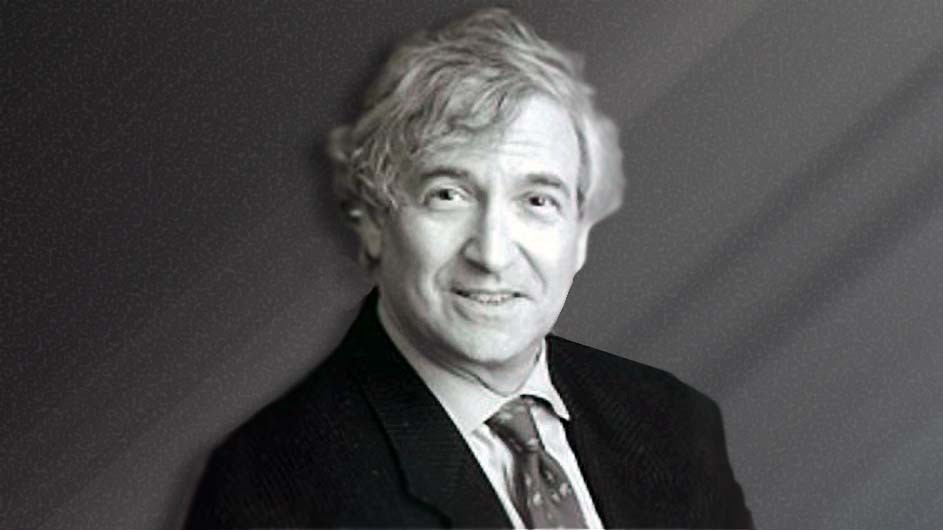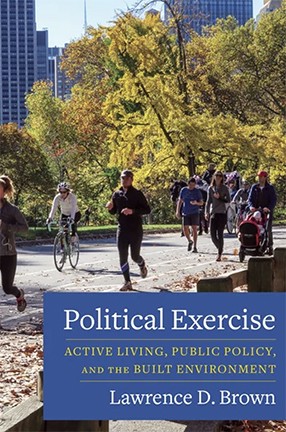A New Book Urges You to Get Up and Get Active
Mailman Professor Lawrence Brown’s “Political Exercise” is at the intersection of public health and urban planning.

The public health benefits of leading a physically active lifestyle are well known to urban planners, public health scholars, and government officials. Moreover, increases in active living, such as walking and cycling, help the environment, support local businesses, and reduce traffic congestion, among other advantages. But best practices in this area are not easy to implement.
In Political Exercise: Active Living, Public Policy, and the Built Environment, Lawrence Brown, a professor of health policy and management at the Mailman School of Public Health, presents five case studies of cities that have promoted active living with varying success through a range of approaches. He argues that in order to implement policies that support active living, their proponents must give communities a sense of ownership of the recommended changes. Political Exercise offers a framework for scholars, policy makers, and reformers to more productively address the rationales behind active living and the political strategies that spur such change.
Brown shares his thoughts on the book with Columbia News, along with what he’s read lately (a lot) and his summer plans.
Q. What inspired you to write this book?
A. As a health policy researcher, I have long understood that a shift from sedentary practices to increased physical activity is at or very near the top of the list of effective strategies for improving health. When the Robert Wood Johnson Foundation created its Active Living by Design program and asked me to participate in its evaluation, I jumped at the chance to do so, and especially to spotlight the often-neglected political dimensions of health care policy.

Q. Why is the implementation of best practices to increase active living necessarily political?
A. Because changes promoting physical activity in the built environment generally involve public funds, public planning bodies (city departments or metropolitan councils, for instance), and public rules (in particular, zoning codes). It is hard to picture the kinds of changes addressed in my book without paying close attention to local governments.
Q. What books have you read lately that you would recommend?
A. Harald Jahner, Aftermath: Life in the Fallout of the Third Reich, 1945-1955; Thomas C. Leonard, Illiberal Reformers: Race, Eugenics, and American Economics in the Progressive Era; Carolyn Hughes Tuohy, Remaking Policy: Scale, Pace, and Political Strategy in Health Care Reform; Kathleen Belew, Bring the War Home: The White Power Movement and Paramilitary America.
Also: Brian Balogh, The Associational State: American Governance in the Twentieth Century; Paul V. Dutton, Beyond Medicine: Why European Social Democracies Enjoy Better Health Outcomes than the United States; and Daniel T. Rogers, As a City on a Hill: The Story of America’s Most Famous Lay Sermon.
Q. What are your summer plans?
A. I hope to catch up on reading, and to work on a research project I am doing with my good friend and Mailman colleague, Professor Michael Sparer, in which we examine in five states the implementation of provisions of the American Rescue Plan that aim to enlarge the public health workforce and improve its capacities.
Q. You’re hosting a dinner party. Which three scholars or academics, dead or alive, would you invite, and why?
A. Alexis De Tocqueville, who remains the wisest and most rewarding interpreter of the fundamentals of American society and political life. W.E.B. Du Bois, who enfolded his many insights on the race question with a profound humanism, rarely matched, then or since. And Clifford Geertz (to my mind, the greatest social scientist of the second half of the 20th century), who restored the interpretation of cultures to its proper prominence in the social sciences, and pointed to the central role of webs of meaning for policy analysis. These three gazed at society and politics with a view both microscopic and telescopic—a fusion devoutly to be wished, but rarely achieved.